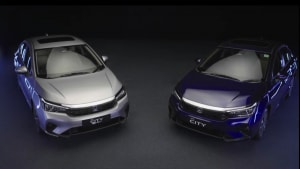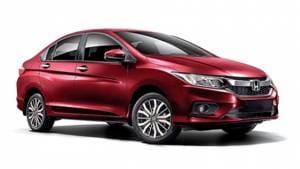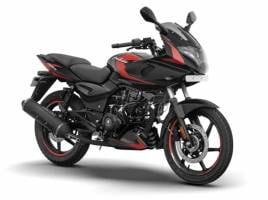2014 Honda City diesel India first drive
For the first time, the world premiere of the Honda City took place in India last month, this shows how important the C sedan is for the Indian market. After all, the City has been Honda India's bestselling nameplate. In the last few years, the car lost out to a few rivals since it lacked a diesel motor and missed out on some vital features. Honda, however, hopes to regain top position with the new car. But does the new City then have the right ingredient to make it yet another best-seller?
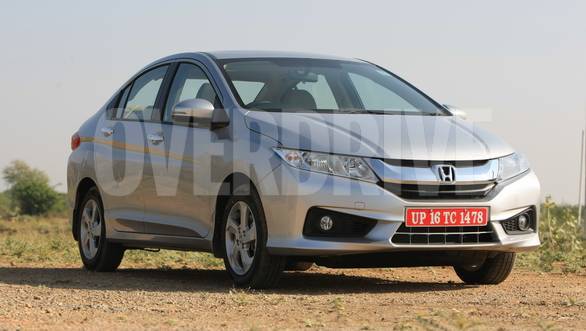
Exteriors
The previous three Honda Citys looked completely different from each other, like they didn't belong to the same family. The first gen model was a simple yet good-looking three box car, the second version looked odd because it was more of a hatchback with an added boot than a sedan but the third new model was smart and attractive. This design worked for Honda and is the reason why it has evolved from there to the new City. It's actually an all new car and shares nothing with the outgoing model but there is a feeling of familiarity. Honda designers have used the new exciting H design language that debuts in India and will soon be seen in the new Jazz. The new design philosophy's wing face is clearly seen in the City. It's dominated by a large chrome strip grille that contrasts well with darker shades while the lower half is the only opening. The grille neatly merges with the sharp headlamps that look very heavily inspired by the new Civic sold internationally. The headlamp itself is split in three sections that accommodate the blinkers, low beam and high beam lamps. The bumper too is angular and features two pointed sections while the fog lamp inserts are large and mimic a sporty air dam. It isn't an attractive face but quite smart.
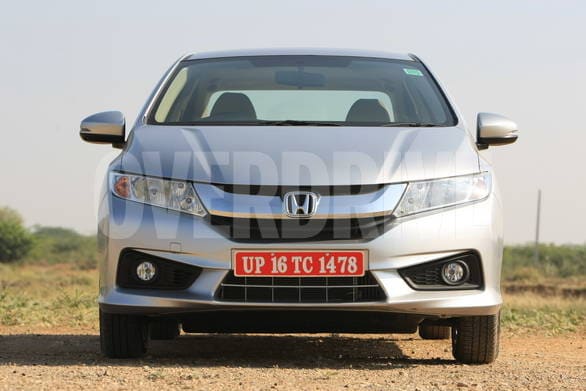 The new 'Exciting-H' design language debuts in India with the Honda City.
The new 'Exciting-H' design language debuts in India with the Honda City.
Despite the car being exactly the same length as the older City, the car does look slightly longer. This is because the wheelbase has grown by 50mm. The height has gone up slightly as well. However, the gap between the wheel and the arch is slightly on the higher side. While the older City featured a rather flat side, the new car has more character. Just like in the concept, the front fender features a prominent curvy line that runs from the bumper to the front door. It ends there because a deep shoulder line starts at the door and goes all the way to the taillamp. A similar curved line is present on the rear fender too, it flows below the shoulder line to the rear bumper and then drops down to give a it a flat sided look. The roofline slopes down more and the silhouette is more coupe like. The only downside to the side is the wheel design, Citys have had striking wheels in every generation but the new wheels are bland and don't go well with the car's styling.
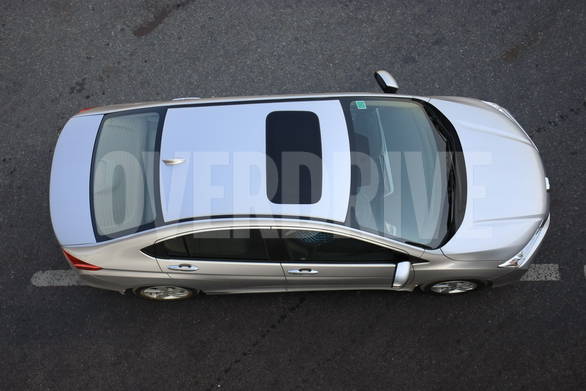 The top end vairant gets a standard sunroof
The top end vairant gets a standard sunroof
The rear end in our opinion is the most striking side of the car, it is unique and unlike any Honda we've seen before. The wraparound tail lights features sharp as well as curved sides that look very European. The unit is much shorter and wider than before and is split in two parts, with one half mounted to the trunk lid. A thin chrome strip neatly sits between the lights while the lower section of the bumper has a lot of lines running across and runs through sleek reflectors. The car's overall width hasn't increased and with wider lights and increased height, the car looks narrower than before.
Interiors
Step inside the car and one will notice one of the best cabins in a C-segment car today. The design is modern yet not overdone. The all black dashboard uses a flat front that's detailed by a piano black panel all the way from the driver side air vent up to the centre console. The centre panel houses the touch screen stereo while a segment first touch screen climate control panel sits below. It is covered by a matte layer to prevent fingerprints but the piano black housing is a finger print magnet. The air vents are unique since they are slim and still function well. A contrasting and sporty metallic element runs along the top and around the centre console.
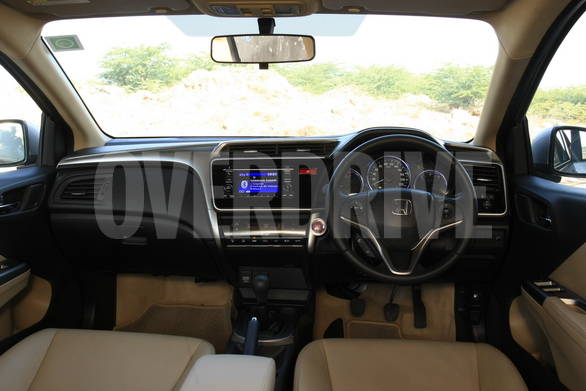 The cabin is modern and well-designed while quality of material used is impressive.
The cabin is modern and well-designed while quality of material used is impressive.
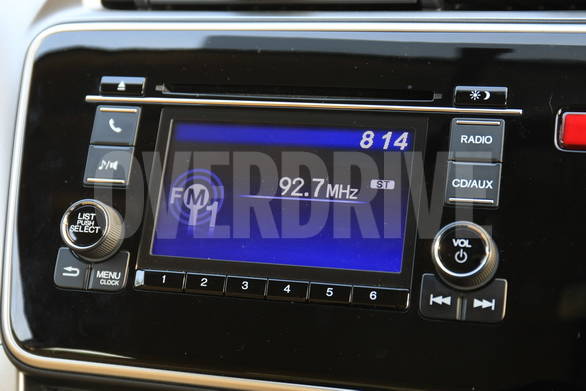 The 5 inch touchscreen music system is standard in the top end variant and offers CD/AUX/USB support. The screen is also the reverse camera display.
The 5 inch touchscreen music system is standard in the top end variant and offers CD/AUX/USB support. The screen is also the reverse camera display.
The steering wheel is the new design three-spoke wheel that takes inspiration from the CR-V, while it gets the same steering controls for audio, telephone and cruise control (first in segment in a manual transmission) among other features. The quality of materials used and overall fit and finish is impressive too. The door pads and pillars are finished in the same beige seen in the older City. Top end variants even get a leather interior. In terms of space, the increased wheelbase has liberated a lot of room up front and at the back. The rear passengers get segment best knee room. And despite no increase in width, shoulder room is now up by 40mm. The front seats are wide and offer sufficient support while headroom has gone up too making it ideal for taller passengers. Boot space has increased to 510-litres while the opening has been widened as well. In fact the space is comparable to a few larger sedans.
Engines
DIESEL
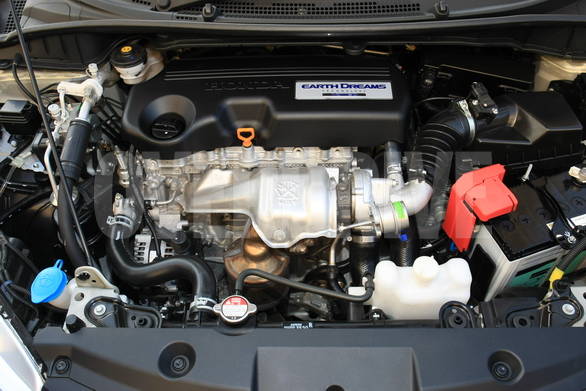 The i-DTEC 1.5-litre diesel motor is similar to the one seen in the Amaze with the same power output but improved fuel effeiency
The i-DTEC 1.5-litre diesel motor is similar to the one seen in the Amaze with the same power output but improved fuel effeiency
The most important addition to the City however is the diesel motor, it's the same all aluminium 1.5-litre i-DTEC engine seen in the Amaze and the power figures haven't changed, max power is 100PS@3600rpm while max torque is 200Nm@1750rpm. However the engine is mated to a new 6-speed manual transmission with optimized gear ratios. Honda engineers felt that the torque was sufficient for the car and have focused more on the driveability and efficiency of the engine. Whether it's driving in town or on the highway, the engine feels effortless. Turbo lag is minimal and the car accelerates easily in any gear. The gear shifts are notchy but are precise. In terms of performance, the car hits 100kmph in 12.8 seconds. Unlike the Amaze that's limited to 140kmph, the City diesel maxes out at 163kmph, however compared to competition, the top speed is still much lower. What the car excels in is fuel efficiency, the ARAI claimed figure is a shocking 26kmpl making it more efficient than the Amaze even and as a result, the most fuel efficient car in India.
While both the petrol and diesel variants get added sound and vibration absorption material, the latter gets a lot more. The damper, dashboard, trunk, doors, roof, engine bay and hood get extra insulation. Even the side glass is thicker and different from the petrol variant. All this has definitely helped in keeping the NVH levels low but at idle and higher engine speeds, cabin noise is slightly higher than a few rival diesel cars. The cabin does get quiter as the engine settles down.
PETROL
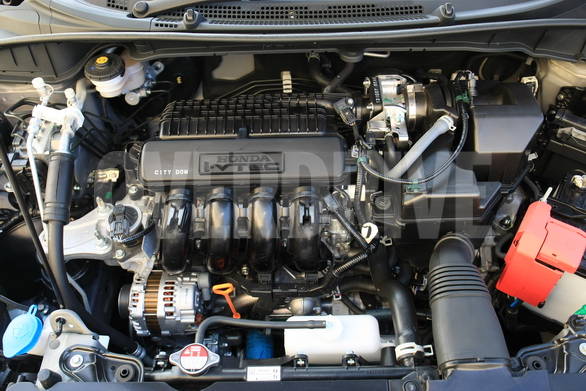
The petrol City uses the same L15A i-VTEC engine seen in the earlier model but receives a few updates. Power has improved slightly while efficiency has gone up too. This has been possible by optimizing the valve timing and the use of a double needle plug. The piston gets a special coating to help reduce friction. Max power is now 119PS@6600rpm while maximum torque of 145Nm is available at 4600rpm. The engine is a rev happy unit and redlines at 6800rpm. Power delivery is impressive and performance is still best in segment. The 5-speed manual transmission is the same slick unit seen before but with changes made to the gear ratios. The sprint to 100kmph now comes up in just 10.67 seconds making it quicker than the previous City by a second almost.
An automatic variant is also on offer but unlike the previous generation car that used a 5-speed automatic transmission with a torque convertor, the new City automatic features a CVT. The new transmission has been developed using Honda's Earth Dreams Technology. The unit is light and compact and is claimed to improve fuel efficiency and acceleration. Paddle shifters are standard and can be used in either D or S mode, the shifts are quick and there is hardly any delay in upshifts as well as downshifts. In S mode, one can even shift gears at the redline. Acceleration is impressive too, the car crosses 100kmph in 12.3 seconds making it one of the quickest automatic cars in the segment. The automatic variant gets an ECON button similar to the CR-V that helps improve fuel economy. Surprisingly the ARAI claimed fuel efficiency of 17.9kmpl is 0.1kmpl more than the MT variant.
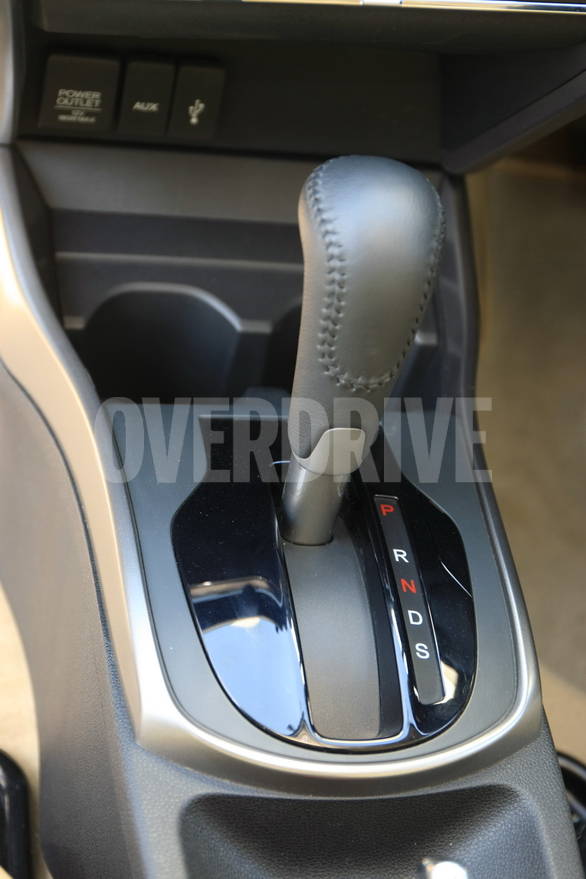 The new Honda city automatic features a CVT with an S mode and paddle shifters
The new Honda city automatic features a CVT with an S mode and paddle shifters
Ride and handling
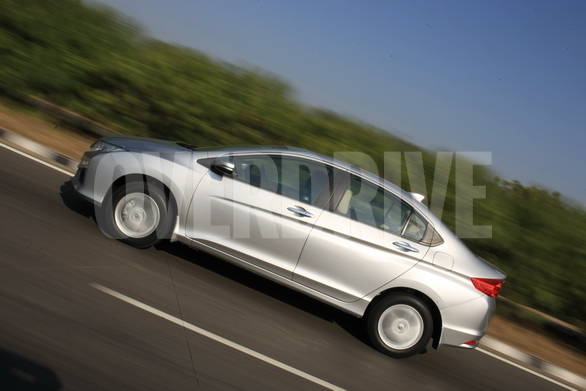 While the overall length hasnt increased, the wheelbase has grown by 50mm
While the overall length hasnt increased, the wheelbase has grown by 50mm
In terms of dynamics, the car is definitely an improvement over the outgoing car, this is a good thing since almost every new generation car loses out on the driving experience with increase in technology. The suspension is slightly stiffer while the body itself is claimed to be more rigid. The new chassis uses a new geometry MacPherson strut up front while the rear suspension continuous to use a H-shaped torsion beam setup but with improved rigidity. While the wheelbase has increased, the car still feels as agile as before. The electrically assisted steering despite being light at parking speeds gains some weight as speeds increase, however feedback could have been better. The diesel City is 100kilos heavier and does feel slightly front heavy when compared to the petrol model but handling is still neutral. Body roll is controlled but when pushed hard around corners, the skinny low rolling resistance tyres tend to lose grip. Straight-line stability is good and the chassis is well balanced even over undulations. Ride quality has improved too, the car absorbs potholes and rumblers quite well.
Features
While every generation of the City received additional standard features only during a mid-life update, the fourth generation City is feature loaded. There are various variants on offer but the top end VX model offers a long list of standard features. The car gets leather upholstery, steering mounted controls for audio/telephone/cruise control, 5-inch touch screen stereo with CD/USB/Bluetooth/Aux support and eight speakers, reverse camera with three modes - normal, wide and top down, touch panel for climate control, push start/stop engine button, keyless entry, four 12v power sockets, sunroof and rear air con vents. There's even a multi information display in the instrument console that displays instantaneous and average fuel efficiency, temperature and cruising range.The instrument meters are surrounded by blue lighting while two ambient lights change colour from blue to green if driven efficiently. The Honda is available in 6 colours including a new Gold Brown metallic shade.
Every time a new Honda City rolls out, it is expected to better the previous model, the new City may look more like an evolved version of the outgoing model but this isnt a bad thing since the third generation model was one of the best C-Segment cars of its time. The new model is an improvement in every aspect. The much needed diesel variant is finally here while the petrol model is now more powerful and efficient. The car even offers segment leading space and a long list of features. All of this makes the Honda a very capable C sedan. While the diesel model is expected to be priced competitively, the price of the petrol model will be similar to the previous car. This only means one thing, the City has everything to make it yet another bestseller.
Click here for the full image gallery
Full spec sheet and comparison with the previous generation Honda City
Starts Rs 10.9 Lakhs
1497cc
Manual
100
145
17.8 Kmpl
